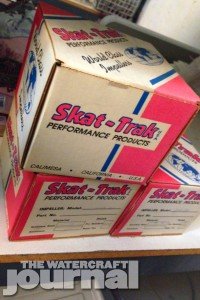
The history of Skat-Trak is still found throughout the company’s massive facility. We spotted these still new-in-box 20-year-old props in the inventory.
“I’m going,” my father insisted when I announced that I was scheduled to tour the Calimesa, California, headquarters of legendary Skat-Trak Performance Products. The multi-acre facility perched off of the northern side of the Inland Empire’s 10 Freeway is an industrial version of the Winchester Mansion, a maze of cross-crossing expansions, additions and alterations that date the company’s near-60 years of business like rings on a tree.
The front office is clean and new with a bright marquee hanging above the front door that directly contrasts a faded and weathered hand-painted sign stretching across the facade of the original large aluminum warehouse out back, a few feet off of the side street entrance. Yet, that is the history laden in Skat-Trak.
Spanning over half a century, the equipment inside is a hodgepodge of modern CAD-design computers, high-tech CNC machines, ancient Naval shipyard-grade Bridgeport presses and drills, to custom-designed tooling shielded from peering camera lenses.
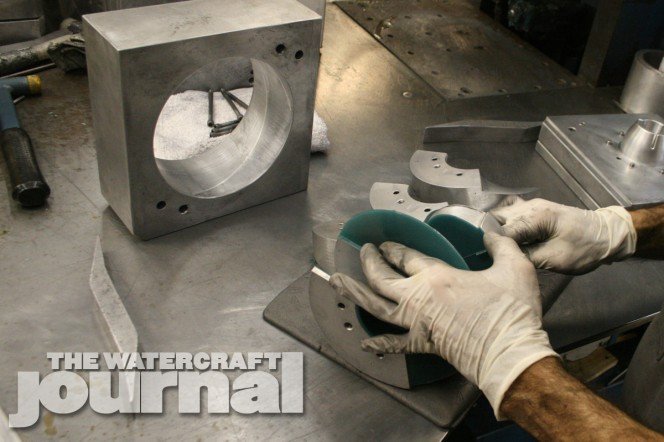
All Skat-Trak impellers begin life in wax. The process is exceedingly time consuming to go from a wax mold to a finished stainless steel prop. Want to know why your custom order is a few weeks out? You’ll see why.

Molten steel will be poured through the center inlet, filling each of these only after being covered and baked in layers of industrial ceramics.
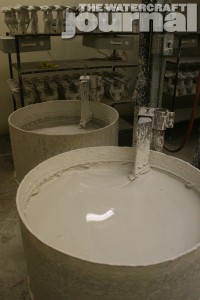
Each component – be it an impeller, a stator or intake grate – starts as a wax mold before being dipped and baked several times to create the final ceramic mold. These vats need to be kept circulating or will immediately harden.
Over its 60-plus-years of manufacturing, the Stuart family has earned incomparable notoriety in both the worlds of personal watercraft and sand sports. Beginning with developing custom paddle tires for dune buggies, sand rails and ATVs, Skat-Trak stepped into offering impellers by the early 1980s.
“I was one of your biggest customers,” my 71-year-old father boasted as he shook Business Office Manager Michelle Stuart-Thompson’s hand. “I had a shop that rented out jet skis, dirt bikes and ATCs in the ’80s. I still use your paddles on my Rhino,” he continued, producing a couple of photos hastily printed from his home computer that morning. Until that time, I had never seen my father “geek out.”
Michelle had volunteered to clear her schedule and walk us through the Skat-Trak headquarters with one key caveat, much of the proprietary processes couldn’t be photographed or documented. That was fine as our tour was intended to be purely experiential, not a nuts-and-bolts breakdown of Skat’s processes.
Snaking from one room to the next, Michelle showed us how each impeller, stator and intake grate is cast in wax before being dipped in several proprietary ceramic solutions, coating it enough to create a mold wherein molten stainless or aluminum is poured and kilned, baking the wax out, leaving a rough, unfinished part.
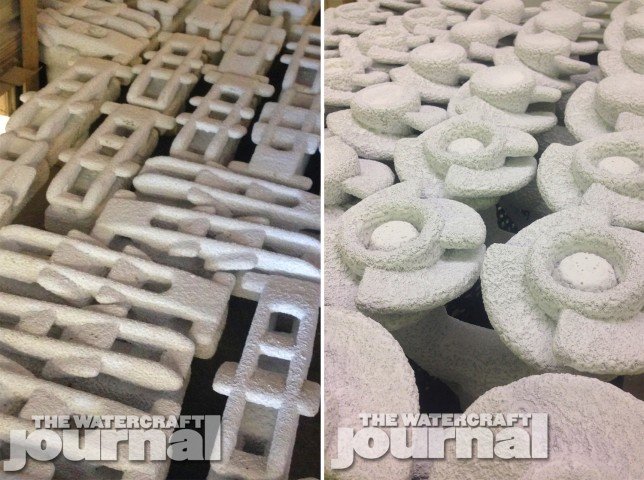
Once coated and hardened, the wax is melted out leaving a hollow mold where molten stainless can be poured in.

Obviously, handling molten 17-4 stainless steel requires proper protection as workers are faced with searing temperatures.
We passed by pallets of dulled stainless steel ingots stacked in the same way gold bricks are in movies, the metal’s luster only to be brought out in the finishing process. From the blistering furnace, the ceramic molds will be shattered, most of their contents to be thrown away. Thankfully, much of the unused slag necessary to fill the impeller molds is recycled, saving Skat-Trak tens of thousands of dollars in material over the years.
Of course, waste is a major issue as California’s strict anti-pollution legislation has all but driven manufacturing from the Golden State. As it stands, Skat has several hoops to jump through to appease such laws, the newest of which requiring the company to collect runoff from its parking lot within 24 hours of a rainfall, and submit it for analysis at any number of “approved” laboratories or face excessive fines.
Once “hatched” from its mold, the impeller is sent off to be polished, measured and finished. Each prop is individually and meticulously evaluated, it’s rough casting polished into a glistening final product. Likewise, every impeller is compared against a final template to ensure that the pitch, angle and blade is correct. Again, the process is time consuming but results in a superior product each and every time.
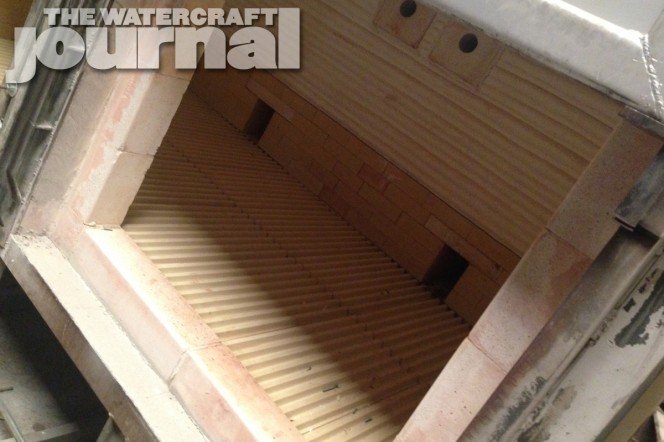
Skat-Trak’s furnaces are impressively large, able to bake several racks of impellers at the same time.
Prior to final packaging, many props require sleeving to which Skat-Trak freezes the knurled sleeves as they simultaneously bake the prop.
As the metal of the prop expands, the frozen sleeve contracts, providing Skat enough clearance to fit the sleeve inside the other. Once both components have adjusted to room temperature, the bond is as strong as a weld.
The manufacturing of Skat’s Magnum Pumps is very much the same as outlined above. Michelle demonstrated how they can offset the stator, configure blade count and placement and otherwise completely customize the pump to the customer’s requirements.
“Almost all of our work these days is custom,” Michelle admitted. “We don’t do big runs of anything anymore. Now it’s all one-off stuff. We’ve had to adjust to being able to build pretty much anything.”

In addition from starting from scratch, Skat-Trak accepts pumps and props for repairs and customization.

The total surface area of the Twin Drive impeller setup is mandatory to produce the thrust necessary to launch Flyboarders dozens of feet into the air or achieve the unmatched speeds of the Hydro-Drag racers.
Recently, the advent of the Flyboard and performance enthusiasts wanting the benefits of dual “Twin Drive” impellers has gotten Skat-Trak dusting off some old tricks.
“Oh yeah,” Michelle smiles slyly. “The top [inducer] propeller is pretty much our old 550 prop. We just pitch it to work with the Main impeller.” This added surface area is what produces the thrust necessary to propel Flyboard riders 30-feet into the air, or push drag racers well into the 90s.
“The Flyboards are really big for us,” she continued. “We get orders from all over the planet. We just sent a couple to Australia this morning. One went to Dubai yesterday.” Motioning to a pair of boxes, Michelle admits, “I think this Twin Drive is for Jerry Gaddis for some testing.”
“We’re not quite getting orders for the World Finals,” she shrugs. “Racers like to wait until the last minute and then wonder why we can’t deliver the next day. We do have a couple of items for Dustin Farthing,” she says, motioning to a Magnum Pump. And sure enough, Farthing showed up at Lake Hartwell, Georgia’s round of the Pro Watercross Tour, taking one moto in the Pro Open class.
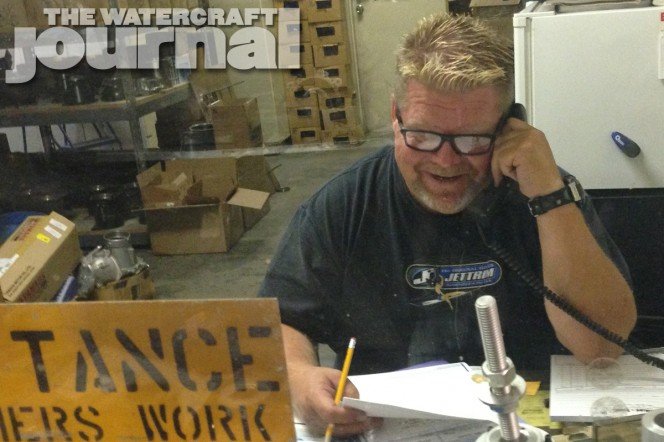
A familiar face to those milling around the pits at race sites since the late 1980s, Glenn Perry is Skat-Trak’s resident guru almost flawlessly being able to diagnose PWC issues at first blush.
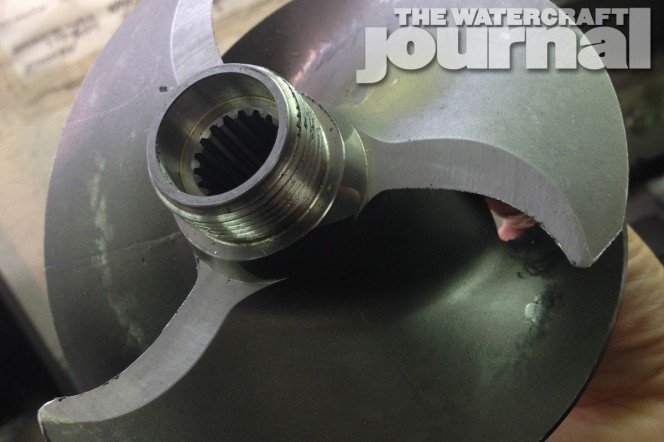
We caught a glimpse of this Sea-Doo Spark impeller in mid-finishing. The unusual lip of the swirl design helps increase acceleration for the lightweight, underpowered machine.
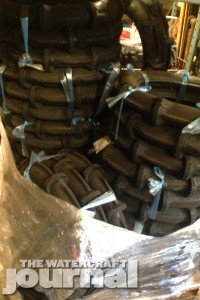
These Intimidator motorcycle paddles feature a mild mohawk center lip with scallops. A pretty cool set of sand tires if we’ve ever seen ’em!
Aside from props, pumps, cones and intake grates, the far larger side of Skat-Trak’s business is its paddle tire industry. Although a far larger majority of Skat’s process is kept under lock and key, we were privy to witnessing the creation of several paddles from beginning to end.
First of all, Skat-Trak doesn’t make tires. They modify them. “Cores” are collected from all over, providing Skat-Trak a variety of sizes and compounds. A very cool machine quickly and pretty violently buffs each tire clean of its tread, leaving the surface smooth or rough, either just on top, or all the way down the sidewall.
Next, uniquely engineered press heats and molds rubber (and available Kelvar fiber mesh) in to the paddles, fusing them to the tire surface. It’s here that as many or as few paddles can be added. Likewise, a bead of knobbies or a single smooth mohawk ridge can be added. From there, the tires are packaged and shipped out.
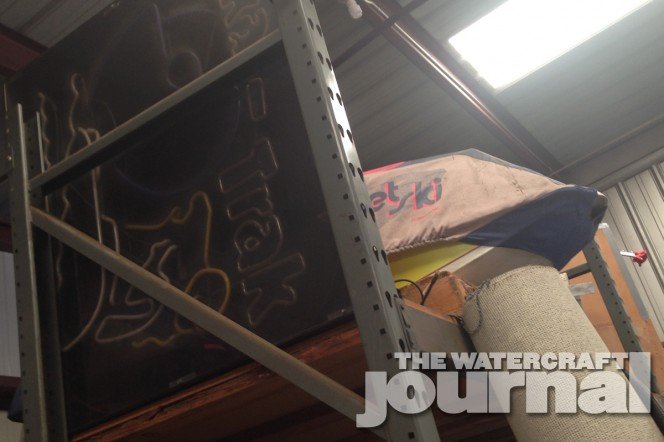
For more “throwbacks,” we spotted some serious gems hidden throughout the Skat-Trak warehouses, including this vintage neon sign that once hung over the offices and a very custom 650SX that, according to Michelle Stuart-Thompson, Gary Hart of Jettrim “desperately wants to get his hands on.”
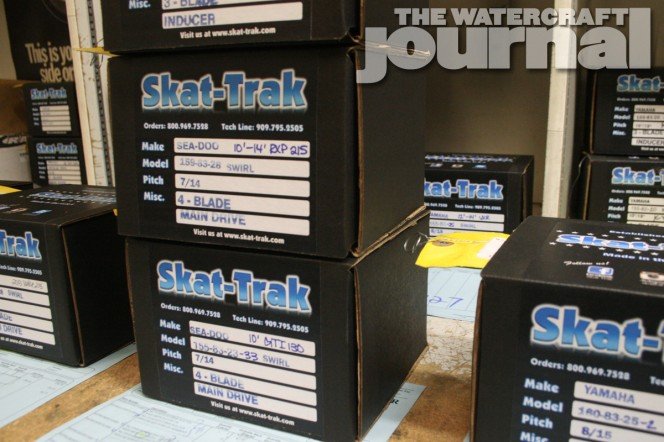
As the sport has evolved, so has Skat-Trak by offering a variety of pitches of props, products and services unique to one of the biggest names in the personal watercraft industry.










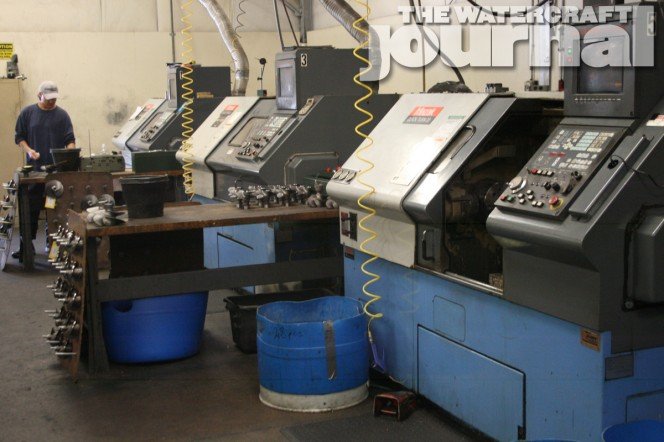
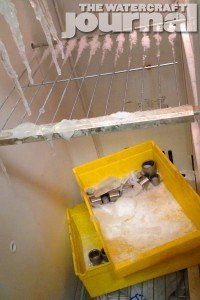



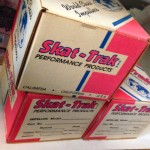
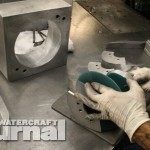
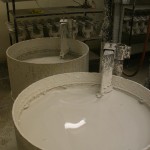
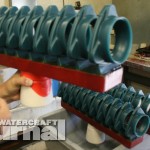
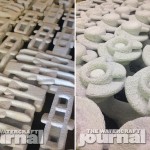
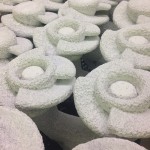
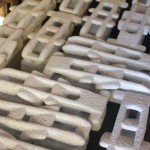
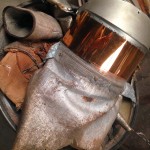
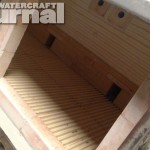
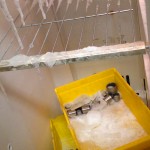


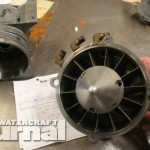
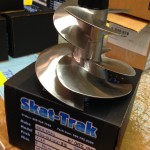
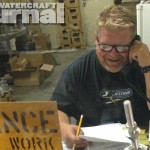
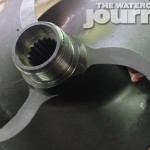
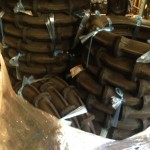
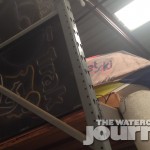

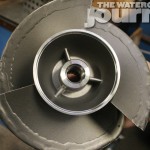

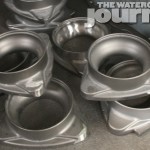

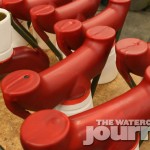
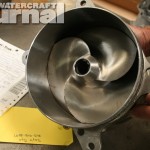
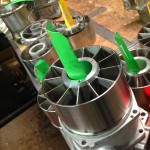

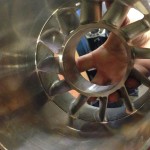
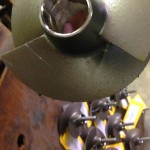
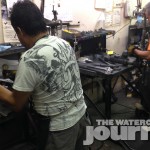
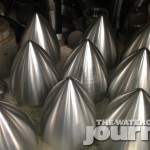
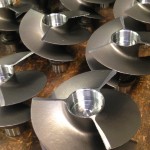
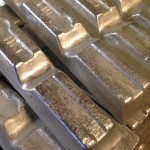

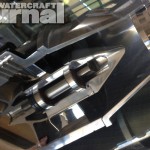
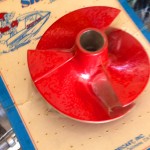
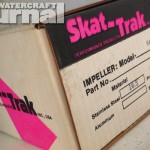
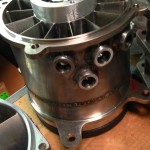
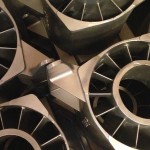
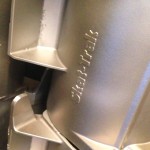
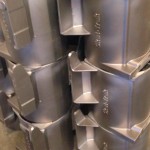
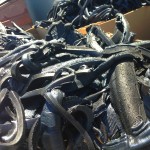
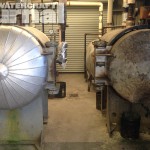
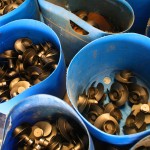

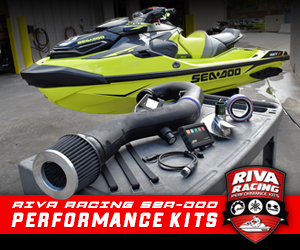
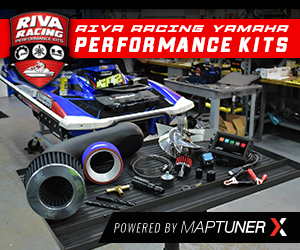


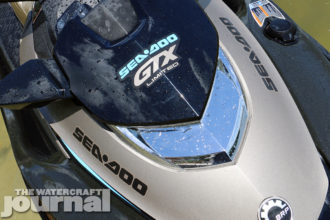

[…] to help motivate our 1.8L WaveRunner. At $339.95, the Skat prop was an imperative purchased, and given their absolutely incomparable level of expertise, we saw no other route. With our new 155-75-25 Swirl impeller in hand, we went to Woody’s Raymer Motorsports in […]
[…] in their lifetime. The Watercraft Journal made that very same pilgrimage in July of last year and produced a very exclusive, inside view at how Skat-Trak creates their championship-winning […]